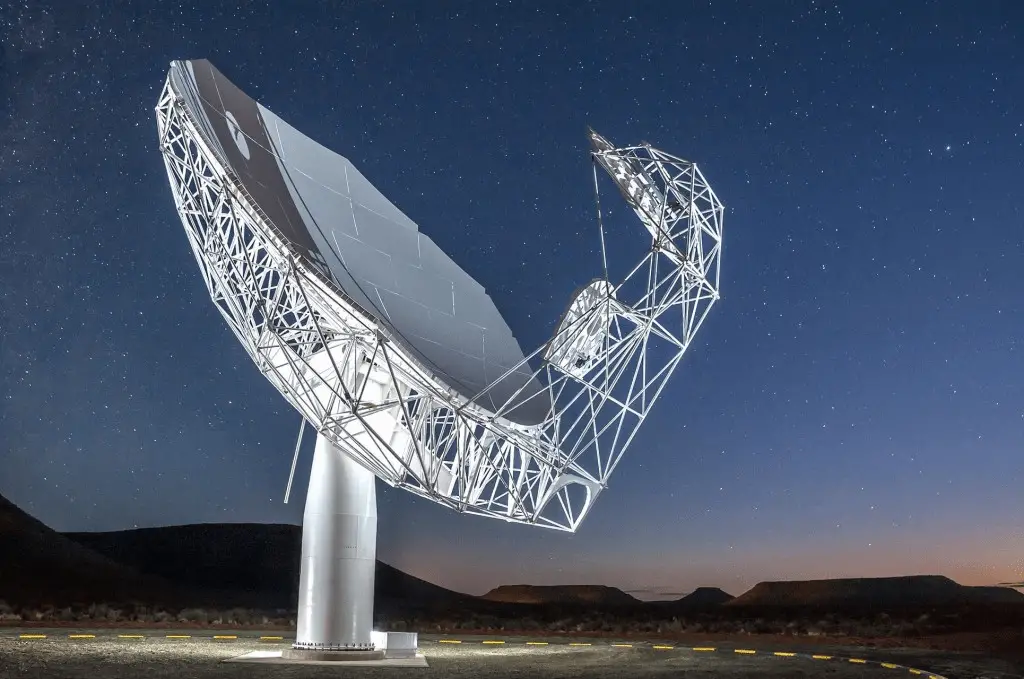The search for extraterrestrial intelligence (SETI) has been ongoing for decades, but recent advances in technology have made it possible to detect signals from other civilizations with greater sensitivity and specificity. One such development is the deployment of a powerful signal processor on the MeerKAT telescope in South Africa, which uses a technique called interferometry to combine its 64 dishes to act as a single telescope.
Interferometry is a method of combining multiple telescopes to improve their resolution and sensitivity. By measuring the phase difference of the signals received by each dish, the interferometer can determine the direction and shape of the incoming waves. This technique is better able to pinpoint where in the sky a signal comes from, which will drastically reduce false positives from radio interference.
The MeerKAT telescope is a precursor to the Square Kilometre Array (SKA), a mega-telescope that will consist of thousands of dishes and antennas spread across southern Africa and Australia. The SKA will be the largest radio telescope in the world, with a total collecting area of one square kilometer. It will be able to detect radio waves from the early universe, distant galaxies, and potentially, extraterrestrial civilizations.
The search for technosignatures, or signs of technological activity, is a key part of the SETI program. If astronomers do manage to detect a technosignature that can’t be explained away as interference, it would strongly suggest humans aren’t the sole creators of technology within the Milky Way. This would be one of the most profound discoveries imaginable, as it would have profound implications for our understanding of the universe and our place in it.
At the same time, if we detect nothing, that doesn’t necessarily mean we’re the only technologically-capable “intelligent” species around. A non-detection could also mean we haven’t looked for the right type of signals, or our telescopes aren’t yet sensitive enough to detect faint transmissions from distant exoplanets. We may need to cross a sensitivity threshold before a Cambrian Explosion of discoveries can be made.
Don’t forget to follow us on Twitter for the latest UFO videos & photos.
Link: twitter.com/LatestUFOs
Artificial intelligence (AI) is playing a key role in the search for extraterrestrial intelligence (SETI). With vast amounts of data being generated by telescopes like MeerKAT, AI algorithms can sift through the noise to identify signals that might indicate the presence of alien technology.
One example of AI’s application in SETI is the Breakthrough Listen project, which uses machine learning to analyze huge amounts of data collected from telescopes around the world. The algorithms are designed to identify patterns that might indicate the presence of an extraterrestrial signal, and they can work much faster than humans could on their own.
Another way AI is being used is to help refine the search parameters. As our understanding of what to look for expands, machine learning models can be trained to identify and prioritize the most promising targets. For example, some scientists are using AI to predict where in the sky we are most likely to find habitable exoplanets, which could help focus our search efforts.
Overall, AI is a powerful tool in the search for extraterrestrial intelligence, and it’s likely to become even more important as we continue to collect more data and refine our techniques. With the help of machine learning algorithms, we may one day be able to answer one of the most profound questions in human history: are we alone in the universe?




Leave a Reply